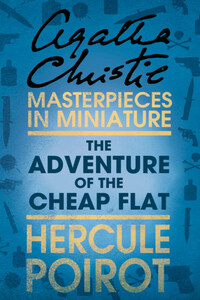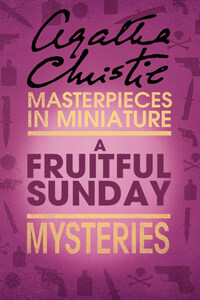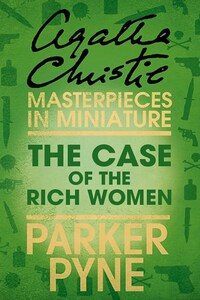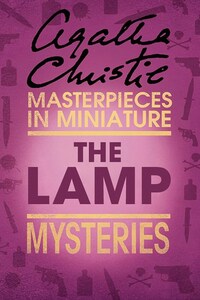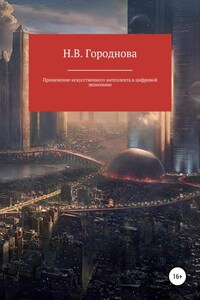Published by HarperCollinsPublishers Ltd 1 London Bridge Street London SE1 9GF
www.harpercollins.co.uk
Copyright © 2008 Agatha Christie Ltd.
Cover design © HarperCollinsPublishers 2014
All rights reserved under International and Pan-American Copyright Conventions. By payment of the required fees, you have been granted the nonexclusive, nontransferable right to access and read the text of this e-book onscreen. No part of this text may be reproduced, transmitted, downloaded, decompiled, reverse engineered, or stored in or introduced into any information storage and retrieval system, in any form or by any means, whether electronic or mechanical, now known or hereinafter invented, without the express written permission of HarperCollins e-books.
Ebook Edition © JUNE 2014 ISBN 9780007560219
Version: 2017-04-17
HarperCollinsPublishers has made every reasonable effort to ensure that any picture content and written content in this ebook has been included or removed in accordance with the contractual and technological constraints in operation at the time of publication.
‘Within a Wall’ was first published in Royal Magazine, October 1925.
It was Mrs Lemprière who discovered the existence of Jane Haworth. It would be, of course. Somebody once said that Mrs Lemprière was easily the most hated woman in London, but that, I think, is an exaggeration. She has certainly a knack of tumbling on the one thing you wish to keep quiet about, and she does it with real genius. It is always an accident.
In this case we had been having tea in Alan Everard’s studio. He gave these teas occasionally, and used to stand about in corners, wearing very old clothes, rattling the coppers in his trouser pockets and looking profoundly miserable.
I do not suppose anyone will dispute Everard’s claim to genius at this date. His two most famous pictures, Colour, and The Connoisseur, which belong to his early period, before he became a fashionable portrait painter, were purchased by the nation last year, and for once the choice went unchallenged. But at the date of which I speak, Everard was only beginning to come into his own, and we were free to consider that we had discovered him.
It was his wife who organized these parties. Everard’s attitude to her was a peculiar one. That he adored her was evident, and only to be expected. Adoration was Isobel’s due. But he seemed always to feel himself slightly in her debt. He assented to anything she wished, not so much through tenderness as through an unalterable conviction that she had a right to her own way. I suppose that was natural enough, too, when one comes to think of it.
For Isobel Loring had been really very celebrated. When she came out she had been the débutante of the season. She had everything except money; beauty, position, breeding, brains. Nobody expected her to marry for love. She wasn’t that kind of girl. In her second season she had three strings to her bow, the heir to a dukedom, a rising politician, and a South African millionaire. And then, to everyone’s surprise, she married Alan Everard – a struggling young painter whom no one had ever heard of.
It is a tribute to her personality, I think, that everyone went on calling her Isobel Loring. Nobody ever alluded to her as Isobel Everard. It would be: ‘I saw Isobel Loring this morning. Yes – with her husband, young Everard, the painter fellow.’
People said Isobel had ‘done for herself’. It would, I think, have ‘done’ for most men to be known as ‘Isobel Loring’s husband’. But Everard was different. Isobel’s talent for success hadn’t failed her after all. Alan Everard painted Colour.
I suppose everyone knows the picture: a stretch of road with a trench dug down it, the turned earth, reddish in colour, a shining length of brown glazed drainpipe and the huge navvy, resting for a minute on his spade – a Herculean figure in stained corduroys with a scarlet neckerchief. His eyes look out at you from the canvas, without intelligence, without hope, but with a dumb unconscious pleading, the eyes of a magnificent brute beast. It is a flaming thing – a symphony of orange and red. A lot has been written about its symbolism, about what it is meant to express. Alan Everard himself says he didn’t mean it to express anything. He was, he said, nauseated by having had to look at a lot of pictures of Venetian sunsets, and a sudden longing for a riot of purely English colour assailed him.
After that, Everard gave the world that epic painting of a public house – Romance; the black street with rain falling – the half-open door, the lights and shining glasses, the little foxy-faced man passing through the doorway, small, mean, insignificant, with lips parted and eyes eager, passing in to forget.
On the strength of these two pictures Everard was acclaimed as a painter of ‘working men’. He had his niche. But he refused to stay in it. His third and most brilliant work, a full-length portrait of Sir Rufus Herschman. The famous scientist is painted against a background of retorts and crucibles and laboratory shelves. The whole has what may be called a Cubist effect, but the lines of perspective run strangely.

